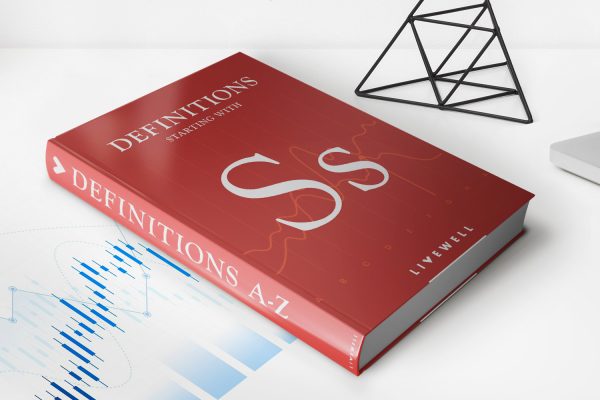

Finance
How Much Is Disability Insurance A Month?
Modified: December 30, 2023
Discover the cost of disability insurance per month and secure your financial future with comprehensive coverage. Compare rates and find the best plan for your budget.
(Many of the links in this article redirect to a specific reviewed product. Your purchase of these products through affiliate links helps to generate commission for LiveWell, at no extra cost. Learn more)
Table of Contents
Introduction
Disability insurance is a crucial financial product that provides income protection in the event that you become unable to work due to a disabling illness or injury. It serves as a safety net by replacing a portion of your income, allowing you to maintain your living expenses and financial stability during challenging times.
While most individuals understand the importance of having disability insurance, they often wonder, “How much is disability insurance a month?” The cost of disability insurance can vary depending on several factors, including your age, occupation, health conditions, and the level of coverage you choose.
In this article, we will delve into the factors that influence disability insurance premiums, explore the average cost of disability insurance, discuss the types of disability insurance available, and provide tips on how to save money on disability insurance.
Understanding the cost and benefits of disability insurance will help you make informed decisions about your financial protection and ensure that you have adequate coverage in place.
Factors Affecting Disability Insurance Premiums
The cost of disability insurance is influenced by various factors that insurers use to assess the risk associated with providing coverage. Understanding these factors will help you determine why premiums may vary and allow you to make an informed decision. Here are some key factors that can affect disability insurance premiums:
- Age: Younger individuals generally have lower premiums since they are less likely to experience health issues that may lead to a disability.
- Occupation: The nature of your work plays a crucial role, as certain occupations carry a higher risk of disability. Jobs with higher physical demands or exposure to hazardous conditions may result in higher premiums.
- Health: Pre-existing health conditions can impact your premium rates. If you have a medical history that suggests a higher likelihood of disability, such as chronic illness or previous injuries, your premiums may be higher.
- Income: The higher your income, the higher your disability insurance premiums are likely to be because the coverage is proportionate to your earnings.
- Benefit Period: The length of time you receive benefits, known as the benefit period, affects the premium. Longer benefit periods typically result in higher premiums.
- Elimination Period: The elimination period is the waiting period before your disability benefits kick in. A shorter elimination period tends to lead to higher premiums.
Insurance providers assess these factors along with other risk assessment criteria to determine your individual premium. It’s important to discuss these factors with an experienced agent or broker who can help guide you through the process and find the best coverage for your needs.
Average Cost of Disability Insurance
The cost of disability insurance can vary significantly depending on the factors mentioned earlier. On average, disability insurance premiums are typically around 1-3% of your annual income. For example, if your annual income is $50,000, you can expect to pay between $500 and $1,500 per year for disability insurance.
It’s important to note that this is just a general guideline and actual premium rates can vary. The actual cost will depend on factors such as your age, occupation, health, and the specific policy features you choose.
For instance, a 30-year-old office worker with a clean health history may pay less than a 40-year-old construction worker with a history of back injuries. Additionally, the level of coverage you select, the benefit period, the elimination period, and any optional riders you add to your policy can also impact the premium amount.
Keep in mind that disability insurance is a long-term investment in your financial security. While the cost may seem significant, consider the potential financial impact of a disability and the income loss if you were unable to work.
It’s advisable to obtain quotes from multiple insurance providers to compare rates and coverage options. Working with a knowledgeable insurance professional can help you navigate the complexities of disability insurance and find a policy that aligns with your needs and budget.
Types of Disability Insurance
When considering disability insurance, it’s important to understand the different types of coverage available. Here are the two main types of disability insurance:
- Short-Term Disability Insurance: Short-term disability insurance provides coverage for a specified period, typically between 3 to 6 months. This type of coverage is designed to replace a portion of your income during a temporary disability, such as recovering from surgery or a non-work-related injury. Short-term disability insurance often has a shorter elimination period and lower premiums compared to long-term disability insurance.
- Long-Term Disability Insurance: Long-term disability insurance offers coverage for a more extended period, ranging from several years to until retirement age. It provides income replacement in the event of a long-term disability that prevents you from working. Long-term disability insurance typically has a longer elimination period, as it takes into account the time it may take to recover from a serious illness or injury. Premiums for long-term disability insurance generally tend to be higher but offer more comprehensive coverage.
It’s important to carefully review the terms and conditions of both short-term and long-term disability insurance policies to ensure they align with your specific needs and financial situation. Additionally, some employers offer group disability insurance as part of employee benefits packages, which can be a cost-effective option to consider.
Understanding the different types of disability insurance will help you make an informed decision about which type of coverage is best suited for your circumstances and level of protection needed.
How Much is Disability Insurance a Month?
The monthly cost of disability insurance will vary depending on several factors, including your age, occupation, health, and the specific policy features you choose. As mentioned earlier, disability insurance premiums are typically around 1-3% of your annual income.
Here’s an example to give you a better idea: If your annual income is $60,000, you can expect to pay between $600 and $1,800 per year, which translates to $50 to $150 per month for disability insurance coverage. This is just a general estimate, and actual premium rates may differ.
Keep in mind that disability insurance premiums are based on the level of risk associated with your occupation. Certain occupations, such as construction workers or firefighters, may have higher premiums due to the increased risk of injury or disability compared to office-based professionals.
The benefit amount you choose also factors into the cost. If you opt for a higher benefit amount, your premiums will be higher. The benefit amount refers to the portion of your income that the insurance company will replace if you become disabled and unable to work.
Additionally, the elimination period and benefit period you select impact the cost. A shorter elimination period may result in higher premiums, as it allows for quicker access to benefits. Similarly, choosing a longer benefit period can lead to higher premiums, as it extends the duration of coverage.
To get an accurate estimate of how much disability insurance will cost you monthly, it’s best to reach out to insurance providers directly or work with an insurance agent who can provide personalized quotes based on your specific needs and circumstances.
Is Disability Insurance Worth the Cost?
When considering the cost of disability insurance, it’s important to evaluate the value it provides and weigh it against the potential financial consequences of not having coverage. Here are a few reasons why disability insurance is worth the cost:
- Income Protection: Disability insurance provides a financial safety net by replacing a portion of your income if you become disabled and unable to work. This ensures that you can continue to meet your financial obligations and maintain your standard of living.
- Peace of Mind: Knowing that you have a reliable source of income if a disability were to occur can bring you peace of mind. You can focus on your recovery and rehabilitation without worrying about how to cover your expenses.
- Financial Stability: A disability can have a significant impact on your financial well-being. Without disability insurance, you may have to rely on savings, borrow money, or even deplete your retirement funds to make ends meet. Disability insurance helps protect your financial stability and preserve your long-term financial goals.
- Protection Against Unforeseen Circumstances: No one expects to become disabled, but it can happen to anyone at any time. Disability insurance offers protection against the unexpected, providing a safety net in case of accidents, illnesses, or injuries that may prevent you from working.
While disability insurance premiums may seem costly, the potential financial impact of not having coverage can be far more significant. It is important to carefully consider the risks and evaluate your financial situation to determine whether the cost of disability insurance is worth the benefits it provides.
Remember, every individual’s circumstances are unique, so it’s essential to assess your own needs and consult with a financial advisor or insurance professional who can help you determine the appropriate coverage for your specific situation.
How to Save Money on Disability Insurance
While disability insurance is an important investment in your financial security, there are ways to manage the cost and potentially save money on premiums. Here are some strategies to consider:
- Shop Around and Compare Quotes: Obtain quotes from multiple insurance providers to compare rates and coverage options. Different insurers may offer different rates based on their underwriting guidelines, so it’s important to do your research.
- Consider Group Coverage: If your employer offers group disability insurance as part of their benefits package, consider enrolling in it. Group coverage is often less expensive than individual policies as the premiums may be subsidized by your employer and pooled with a larger group of people.
- Adjust the Elimination Period: The elimination period is the waiting period before disability benefits kick in. By choosing a longer elimination period, such as 90 or 180 days instead of 30 days, you can lower your premiums. However, ensure you have enough savings or an emergency fund to cover your expenses during the waiting period.
- Opt for a Shorter Benefit Period: The benefit period is the duration for which disability benefits are payable. Choosing a shorter benefit period, such as 5 or 10 years instead of until retirement age, can reduce your premium costs.
- Maintain Good Health: Insurance premiums are often based on your health status, so maintaining a healthy lifestyle and managing any pre-existing health conditions can help you secure lower premiums.
- Avoid Unnecessary Riders: Disability insurance policies may offer optional riders that provide additional benefits but come at an extra cost. Evaluate each rider carefully and consider if it aligns with your needs. Avoid unnecessary riders that may inflate your premiums.
It’s important to strike a balance between managing the cost of disability insurance and ensuring that you have adequate coverage to protect your financial well-being. Working with an experienced insurance agent or broker can help you navigate these options and find the best solution for your needs and budget.
Conclusion
Disability insurance is a vital financial product that provides income protection in the event of a disability that prevents you from working. While the cost of disability insurance varies depending on factors such as age, occupation, health, and policy features, it is an investment well worth considering for your financial security.
Factors such as age, occupation, health, income, benefit period, and elimination period impact the cost of disability insurance premiums. It’s important to evaluate these factors carefully and seek quotes from multiple insurance providers to compare rates and coverage options.
Short-term disability insurance covers temporary disabilities, while long-term disability insurance offers coverage for an extended period. Understanding the types of disability insurance available can help you choose the appropriate coverage for your needs.
Ultimately, the value of disability insurance lies in its ability to provide income protection, peace of mind, and financial stability during challenging times. It serves as a safety net against unforeseen circumstances, ensuring that you can maintain your financial obligations and meet your daily expenses even if you are unable to work.
While disability insurance premiums may seem significant, it’s important to consider the potential financial consequences of not having coverage. By carefully evaluating the risks and benefits, and exploring strategies to save money, you can find a disability insurance policy that fits your needs and budget.
Remember to consult with insurance professionals or financial advisors who can provide guidance tailored to your specific situation. By making informed decisions and taking steps to protect your income, you can safeguard your financial well-being and gain peace of mind knowing that you are prepared for the unexpected.














